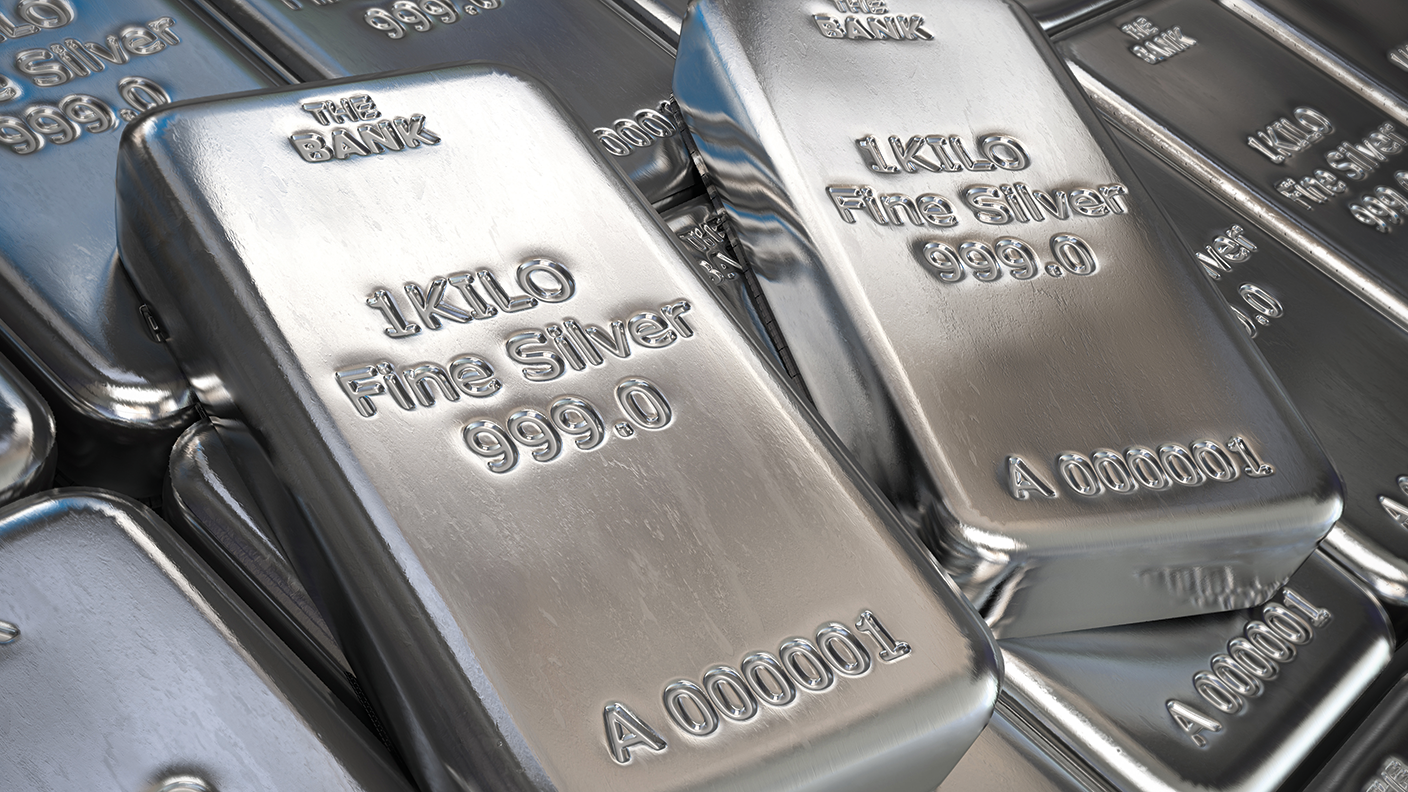The silver price should be soaring – so why isn't it?
Silver boasts promising fundamentals and vast scope for price rises. Nevertheless, it has failed to fulfil its potential. There is no metal more frustrating for investors, says Dominic Frisby.



Was there ever a metal with as much potential as silver? On the one hand it's a monetary metal, so its price will rise for all the same reasons that gold's will. Currency debasement, suppressed interest rates, inflation, political instability all should benefit silver. Silver is an asset outside of the financial system. Like gold, it is nobody else's liability.
On the other hand, it's an industrial metal that has myriad uses, particularly in new technology. Its uses will only increase as the world gets more "electronic". Computers, mobile phones, batteries, cars, engines, media storage, engines, explosives, plastics, cameras they all require silver.
New uses for silver are being discovered
New discoveries are being made all the time about its ability to combat infection, fungi, bacteria and even bad smells. As a result, demand is increasing from medicine, biotechnology and clothing. The metal is used in everything from treatment of warts and bad breath to purifying water. It is also an ingredient in hospital paint. Coating walls with paint containing silver particles should help fight infection.
MoneyWeek
Subscribe to MoneyWeek today and get your first six magazine issues absolutely FREE

Sign up to Money Morning
Don't miss the latest investment and personal finances news, market analysis, plus money-saving tips with our free twice-daily newsletter
Don't miss the latest investment and personal finances news, market analysis, plus money-saving tips with our free twice-daily newsletter
There is also a particularly exciting source of demand, as far as potential growth is concerned: solar power. Demand for silver on photovoltaic cells has gone from one million ounces in 2000 to around 50 million ounces last year about 5% of silver's annual supply. Assuming solar power usage grows, demand for silver will increase. Then there is jewellery and demand from investors. These two areas jointly accounted for roughly 400 million ounces last year.
At the same time there could be a shortage of supply. About 80% of silver's billion-ounce annual demand comes from mining, the rest from scrap. There has been a paucity of major new discoveries. Many of the pure-play silver miners have struggled to make money in recent years and investment in exploration is minimal.
Meanwhile, a great deal of silver is produced as a by-product of lead and zinc mining, another area where investment has disappeared. Silver runs an annual supply-demand deficit. There has been a surplus in only one of the past five years. Last year's deficit was 30 million ounces.
Silver is in the bargain basement
What's more, silver is cheap. At $17.50 an ounce, silver now sits some 65% off its all-time high of $50 (set in 2011). And it's not just cheap when looked at in absolute terms. Relative to gold, it is cheap. One ounce of gold is 85 times the price of an ounce of silver. A geologist will tell you that ratio should be closer to 15: there is only 15 times as much silver in the earth's crust as there is gold. Indeed, 15 is the historical monetary ratio between the two. Even in recent decades, with silver's monetary status long gone, the long-term average sits closer to 50 than 85. Sell gold and buy silver is the message.
Relative to other assets, such as the stockmarket, silver is cheap too. If silver returned to its long-term average ratio against the FTSE or the Dow in other words, if there was some kind of historical reversion to the mean then silver would have to rise to the $50, $100, or $200/oz regions.
In 1980 you could buy the average UK house (currently over £200,000) for about 1,000 ounces of silver (currently $17,500). Silver would have to rise 15-fold to something over $200 for that particular ratio to be achieved again. In short, what's not to like? Silver seems to have so much going for it.
Every silver lining has a cloud
I'll tell you what's not to like: silver. The silver story has been about for as long as I can remember. It just never seems to deliver on its potential; not for any extended period anyway. For years it doesn't move, or worse, it sinks.
Then, no doubt at the one time you're not invested, it suddenly goes on a bull-market run to $50 or something, before collapsing and doing nothing for another ten years. Don't own any silver and you are doomed to watch it rise. Own it, however, and you are doomed to watch it slide and stagnate.
It's supposed to give you leverage to the gold price. But sometimes gold goes up and silver doesn't move. Other times it takes your breath away. There is no metal more frustrating than silver. Bipolar silver.
I'm surprised the ancient Greeks don't have a myth for the frustrations born out of investing in silver. Silver is doomed to be compelling, alluring, irresistible and beautiful. It is doomed to entrap you with its vast potential. Yet, once trapped, you are doomed to disappointment by its never-ending failure to deliver. Every cloud has a silver lining, runs the old saying. There is an exception to this, however, and that is silver itself. Every ounce of silver has a cloudy lining.
Get the latest financial news, insights and expert analysis from our award-winning MoneyWeek team, to help you understand what really matters when it comes to your finances.
Dominic Frisby (“mercurially witty” – the Spectator) is as far as we know the world’s only financial writer and comedian. He is the author of the popular newsletter the Flying Frisby and is MoneyWeek’s main commentator on gold, commodities, currencies and cryptocurrencies. He has also taken several of his shows to the Edinburgh Festival Fringe.
His books are Daylight Robbery - How Tax Changed our Past and Will Shape our Future; Bitcoin: the Future of Money? and Life After the State - Why We Don't Need Government.
Dominic was educated at St Paul's School, Manchester University and the Webber-Douglas Academy Of Dramatic Art.
You can follow him on X @dominicfrisby
-
 5 investment trusts for your pension
5 investment trusts for your pensionInvestment trusts are often a good choice for long term growth and income options, but which ones should you consider for your pension?
-
 Inheritance tax climbdown as agricultural property relief threshold raised
Inheritance tax climbdown as agricultural property relief threshold raisedReforms to agricultural property relief had sparked strong opposition, and the government has now diluted its controversial inheritance tax plans for farmers
